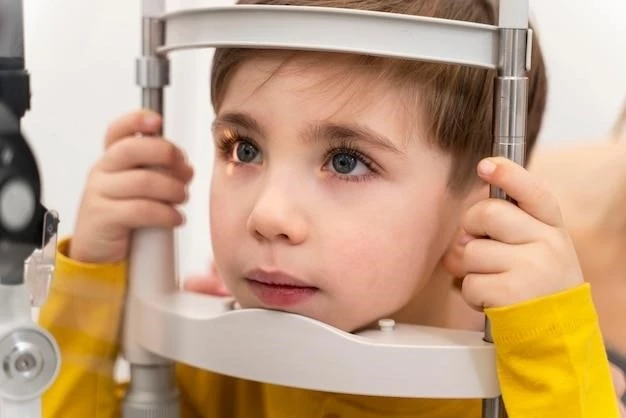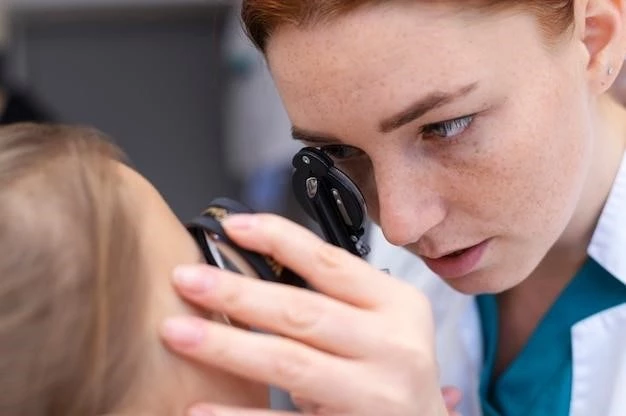Coloboma is typically caused by abnormal eye development during pregnancy‚ often associated with genetic mutations.
Causes of Coloboma
Coloboma can result from genetic factors or environmental influences affecting eye development in the womb. Mutations in genes such as PAX6 are frequently linked to coloboma. Additionally‚ exposure to certain medications or infections during pregnancy can also contribute to the development of coloboma. Understanding the precise causes of coloboma is crucial for proper diagnosis and management of this congenital condition.
Treatment Options for Coloboma
Treatment for coloboma focuses on managing associated vision impairments. This may include glasses‚ contact lenses‚ or surgical interventions like reconstructive surgery to improve vision. It is essential for individuals with coloboma to undergo regular eye examinations and work closely with ophthalmologists to address any visual challenges effectively. Early intervention and appropriate management can significantly enhance the quality of life for coloboma patients.
Porencephaly may manifest in symptoms such as developmental delays‚ seizures‚ muscle weakness‚ and intellectual disability.
Symptoms of Porencephaly
Porencephaly presents with various symptoms‚ including seizures‚ spasticity‚ intellectual disabilities‚ hydrocephalus‚ and hemiparesis. Individuals with porencephaly may also experience developmental delays and motor function impairments. The severity and manifestation of symptoms can vary depending on the extent and location of the brain lesions associated with porencephaly. Early identification and management of symptoms are crucial for providing appropriate care and support to individuals affected by this condition.
Prognosis for Individuals with Porencephaly
The prognosis for individuals with porencephaly varies based on the extent of brain damage and associated complications. While some individuals may experience severe neurological deficits and disabilities‚ others may have milder symptoms and better outcomes. Early intervention‚ specialized medical care‚ and therapies tailored to address specific challenges can significantly impact long-term prognosis. Regular monitoring and support from a multidisciplinary team are essential to optimize the quality of life for individuals with porencephaly.
Diagnosing hydronephrosis in children involves imaging tests like ultrasound and CT scans to assess the condition of the kidneys and urinary system.
Diagnosing Hydronephrosis in Children
Diagnosing hydronephrosis in children involves a thorough evaluation of symptoms‚ physical exam‚ and imaging studies. Tests such as ultrasound‚ MRI‚ or CT scans help assess the severity and underlying causes of hydronephrosis. Additionally‚ voiding cystourethrogram (VCUG) may be conducted to evaluate the bladder’s function and rule out other urinary system abnormalities. Prompt and accurate diagnosis is crucial for determining the appropriate management plan and ensuring optimal outcomes for children with hydronephrosis.
Management Strategies for Hydronephrosis
The management of hydronephrosis in children typically involves monitoring the condition‚ addressing underlying causes such as urinary obstructions or reflux‚ and implementing treatment options. Treatment may include medications‚ catheterization‚ or surgical interventions like pyeloplasty or nephrectomy‚ depending on the severity and cause of hydronephrosis. Regular follow-up visits with pediatric urologists and nephrologists are essential to evaluate the effectiveness of the chosen management strategies and ensure optimal kidney function and overall well-being in children with hydronephrosis.
Genetic Factors in Coloboma Development
Coloboma development can be influenced by various genetic factors‚ with mutations in genes like PAX6‚ SOX2‚ and OTX2 playing a significant role. These genetic alterations can disrupt normal eye formation during embryonic development‚ leading to the characteristic defects associated with coloboma. Understanding the genetic basis of coloboma is crucial for genetic counseling‚ early diagnosis‚ and potentially targeted treatment approaches in affected individuals. Research continues to explore the intricate interplay between genetic factors and environmental influences in the development of coloboma.
Porencephaly can present with various types‚ including unilateral and bilateral forms‚ each with unique characteristics and implications.
Different Types of Porencephaly
Porencephaly manifests in unilateral or bilateral forms‚ with unilateral typically affecting one hemisphere and bilateral impacting both. Additionally‚ open-lip and closed-lip porencephaly are distinct types characterized by the presence or absence of a communication between the ventricle and the cyst. The types of porencephaly can influence the severity of symptoms and complications experienced by affected individuals‚ emphasizing the importance of precise diagnosis and tailored management strategies to address specific challenges associated with each variant.
Complications Associated with Porencephaly
Porencephaly can lead to various complications such as motor impairments‚ cognitive deficits‚ seizures‚ hydrocephalus‚ and cerebral palsy. Individuals with porencephaly may also experience developmental delays‚ speech and language difficulties‚ and vision problems. The presence of brain cysts or cavities in porencephaly can further contribute to the development of complications. Management of porencephaly requires a multidisciplinary approach to address the diverse challenges and complications that may arise‚ with interventions tailored to the specific needs of each individual to optimize their overall well-being and quality of life.
Surgical Interventions for Hydronephrosis
When conservative treatments are ineffective‚ surgical interventions may be necessary to correct underlying causes of hydronephrosis. Procedures like pyeloplasty‚ ureteral reimplantation‚ or nephrectomy may be performed to alleviate urinary obstructions and improve kidney function. The choice of surgical intervention depends on the severity‚ location‚ and specific etiology of hydronephrosis in each case. Surgical management aims to restore normal urinary flow‚ prevent kidney damage‚ and enhance the overall health and well-being of children with hydronephrosis.

Vision Impairment in Coloboma Patients
Vision impairment in coloboma patients can range from mild to severe‚ affecting visual acuity‚ field of vision‚ and depth perception. The extent of vision loss often correlates with the size and location of the coloboma. Strategies for managing vision impairment may include corrective lenses‚ visual aids‚ vision therapy‚ and in some cases‚ surgical interventions. Regular eye examinations and consultations with ophthalmologists are essential to monitor and address visual challenges effectively‚ supporting the overall visual health and quality of life of coloboma patients.
Neurodevelopmental Outcomes in Porencephaly
Neurodevelopmental outcomes in porencephaly can vary significantly‚ with individuals experiencing a range of developmental delays‚ cognitive impairments‚ motor function deficits‚ and neurological challenges. The location and size of the brain cysts or cavities associated with porencephaly can impact the severity and type of neurodevelopmental outcomes observed. Early intervention with therapies such as physical therapy‚ speech therapy‚ and occupational therapy can help address specific needs and maximize developmental potential in individuals with porencephaly. A multidisciplinary approach involving neurologists‚ therapists‚ and educators is crucial for supporting optimal neurodevelopmental outcomes and enhancing the quality of life for individuals affected by this condition.
